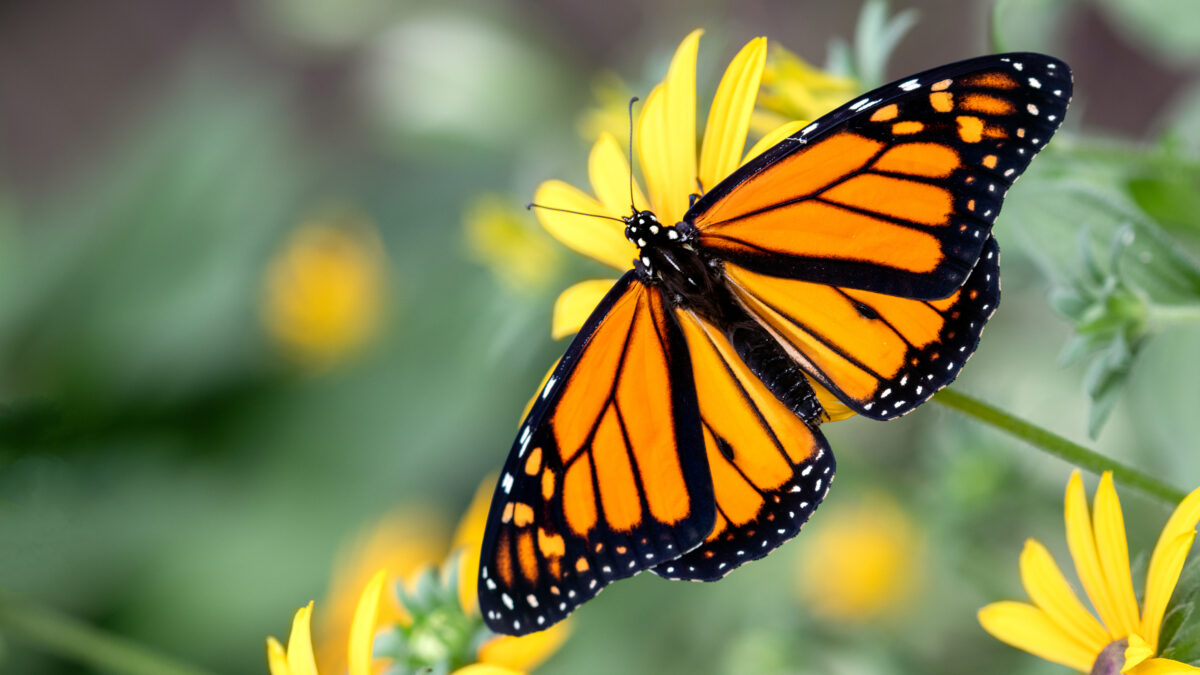Farmer involvement critical to preserving Monarch butterflies
Guest Author
Special Contributor to FB.org

photo credit: Getty
Guest Author
Special Contributor to FB.org
Download a 60-second audio version of this column at Giblin Focus.
Monarch butterflies are known for their beauty and considered a national treasure. Although Monarch populations have been declining, farmers can help to play an important role in writing the plan not only to preserve them, but to increase their population.
The Monarch butterfly is the only known butterfly species to make a two-way migration, much as birds do. Each spring, they journey from wintering grounds in Mexico to the northern U.S. and Canada. Unlike birds, the journey north requires multiple generations. Along the way, Monarchs stop to lay eggs on milkweed plants. Their offspring resume where the parents left off. The last generation may survive several weeks or months for its return to Mexico.
In 2014, researchers announced that the population has declined by roughly 90 percent since 1993. The U.S. Fish and Wildlife Service said in February the individual Monarch population may have dropped an estimated 970 million, and announced it was considering placing Monarchs on the endangered species list. Most surveys have been based on counts of the overwintering population in Mexico, but a new study published in the Annuls of the Entomological Society of America suggests Monarch numbers rebound in warmer months.
Almost all scientific studies acknowledge that the overall population has declined, and steps should be taken to restore habitat for Monarchs and other pollinators.
AFBF, environmentalists, government agencies and butterfly aficionados all are working to assist. It 's also one part of the White House Pollinator Strategy released May 19 to promote the health of honey bees and other pollinators. Part of the strategy calls for public and private action to restore or enhance 7 million acres of land for pollinators over the next five years.
Monarch habitat restoration is the first step. It poses many unique challenges, however, especially for farmers. Monarchs need common milkweed to breed, and it is the only food source for their caterpillars. Yet, milkweed is a deep-rooted, perennial weed that can cause severe yield losses in many crops, with historic economic losses totaling millions of dollars annually. Milkweed is classified as a noxious weed in many counties, where failure to control such weeds can bring fines.
As part of population restoration efforts, the EPA – which plays a strong role in herbicide regulation – solicited public comments on its white paper, "Risk Management Approach to Identifying Options for Protecting the Monarch Butterfly." EPA identified two critical elements of its approach: seeking input from a diverse group of stakeholders and identifying activities that will balance weed management needs across varied landscapes with conservation of the milkweed plant. EPA also said its efforts must balance conservation efforts with other weed management needs. AFBF, as well as several state Farm Bureaus and individual farmers, supported this perspective in comments submitted to EPA.
Some activists are using Monarch habitat restoration initiatives to leverage their efforts to ban one class of herbicides, glyphosate, and eliminate planting crops genetically modified to incorporate glyphosate into crop management systems. Although EPA ultimately denied a petition by the Natural Resources Defense Council to take actions to reduce the use of glyphosate due to its impact on milkweed, EPA 's white paper states that its approach is in line with the objectives of the NRDC petition.
In its comments, AFBF disagreed with EPA 's characterization, and said the EPA should not have, even indirectly, indicated that its risk management approach is in line with a policy the agency neither has, nor should, endorse. AFBF has asked the agency to strike the phrase from its use.
A multi-stakeholder approach ultimately will include representatives who bring a variety of perspectives, positions and ideas. Already, farmers and other stakeholders are collaborating to develop state pollinator plans and preserve pollinator habit.
Monarch butterflies, bees and other pollinators are critical to the survival of agriculture and the food supply system: They are, in fact, required for one out of every three bites of food on our plates. Farmers rely on pollinators for their livelihood, and restoring Monarch habitat is part of their role as caretakers of the land. Farmers must be involved every step of the way.
Robert Giblin writes, speaks and consults about agricultural and food industry issues, policies and trends.
Trending Topics
VIEW ALL